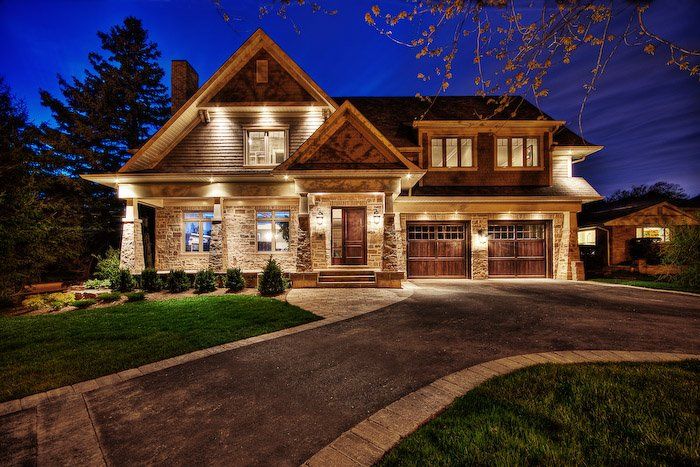Design Blog
Reducing construction costs is usually thought of in terms of reducing material and labour costs. However, the biggest cost savings can actually come from only building what you need. More money can be saved by changing the drawings than by trying to squeeze lower prices out of suppliers. The following 10 tips are ways you can save in the planning of your project and in how you carry it out.
1. Select your architect early before you have bought your land. Well-designed architecture is fit to the environment. You can select the land you like and design to it. Or you can create a preliminary design and seek land that supports it. The same factors apply to existing buildings. Let the architect help you determine if the fit will work for you.
2. Have your architect help you define how much space and land you need. Architects call this programming. They can sit down with you and help you determine the size of home you really need. Sometimes homeowners build homes that are larger than they need because they are used to having to adapt to an inefficient design. Having an efficient design can allow you to spend more on things which increase the quality of your home. Quantity is not everything. On the other hand it is something. Have your architect check to make sure the land you are looking at is large enough for your project. Easements, legal restrictions, site conditions, and vehicle access can limit the practical buildable area of your land.
3. Have your architect review your land purchase. The site orientation, adjacent conditions, soil conditions, slope, and vegetation can limit or enhance your project. The interactions of these factors can be complex and a graphic site analysis might help you decide whether this is really the right property for you. Or it may affect your offer for the land. While architects don’t mind a challenging site, having them assist in your site selection can save you a substantial amount of construction cost. Your architect can alert you to hidden expenses that the land you are looking at will require. Be willing to pay a surveyor or testing firm for basic information on the site. The seller may have such information already. If so, pass it along to your architect. Architects can also perform a preliminary code analysis that looks at zoning and code restrictions on the property as a whole.
4. Have your architect help you plan out your building and financing process. Architects are familiar with what construction of their designs is likely to cost. They can be very useful in helping you determine not only how long your project should take, how much it should cost and how it can be accomplished. This might include building your project in phases or allowing for a later expansion. Your starter home can grow to be the center of your dream home. You can start with building the core area and have the final work completed as your family grows. For financing, an architect can provide you with a preliminary design and an opinion of the probable cost (including a contingency). This will allow your bank to determine for you how the project’s cost compares to it’s value in the real estate market. Including your architect’s fees in the construction loan can make using an architect more affordable.
5. Have your architect help establish the preliminary budget you should have for your project. Architects can prepare a cost opinion for your project in as little as 15 minutes with the basic size and location of your project. Of course such an opinion is rough and includes a substantial contingency but it is a good place to start. This allows you to see immediately whether you need to rethink how big or how complicated your home will be. It is not a reason not to proceed. It is a guide that tells you your path to your dream home may not look like your neighbor’s. Once a design has been established an architect can prepare a cost opinion based on the systems used in the building. This can include innovative mechanical and lighting systems, exotic construction systems (usually for lower cost or higher performance) as well as windows, doors, fixtures, and finishes. This opinion will take much longer to prepare and will be specific to your design.
6. Consider buying an existing facility. Construction costs for similar construction materials were less expensive 20 years ago than they are now. Making use of that embedded value can add to your project. It is often less expensive to renovate an existing building than it is to build a new one. This is true even when the renovation is extensive. The key is to obtain a structure which is in good condition (for what you want to retain) and which is a reasonably close fit.
7. Have your architect evaluate facilities you are interested in. Preliminary analysis and design may cost you a bit when performed on structures you have not yet bought. They can however save you many thousands of dollars. You may find after the analysis that the structure won’t work well for your intended purpose. It might be too small or too large or have insufficient clearance for your equipment. It may have substantial maintenance or structural issues. The cost of buying the wrong property is more than the architect’s fees.
8. Consider recycled materials. If you are considering a high level of craftsmanship for your project, be aware that vintage interior doors, hardware, base and cornice trim, ornaments, mantles, flooring and stained glass are among the elements that can be obtained used in most urban areas. Antique shops and architectural specialty shops are the best sources. Using these items judiciously can allow you to have finely detailed work in your project without paying for a new creation. Be prepared to have your architect spend some time detailing how to incorporate such items. You will need to spend the time to find them. Try and get the shop you are purchasing these items from to store them for you till they are needed on site. Negotiate on the asking price. Remember, these items are only inexpensive compared to making the same item the original way now.
9. Unleash your architect. Albert Einstein is credited with saying that the operational definition of insanity is to do the same thing over and over and to expect different results. If you insist that your architect give you what everyone else has, it will cost what everyone else paid—maybe a little more. (Theirs is already done.) Give your architect some leeway to experiment with low-cost materials or alternative systems. Have her concentrate on what is essential and minimize the rest. Don’t be afraid to be different.
10. Consider selecting a smaller architecture firm. People often think that a bigger firm is more reliable than a smaller firm. This is not necessarily the case. A small project in a large firm may be assigned to a team of only two or three people. A small firm of only two or three people can easily handle the same size project. With today’s production techniques a team of two or three can easily handle a project of several million dollars as fast and as well as a larger firm would produce. Sometimes, smaller firms have lower overhead and are able to charge you less. This varies as larger firms can sometimes distribute their overhead over more projects and achieve an economy of scale. Still, the project is likely to be more important in a smaller firm. You could expect to have your project assigned a higher priority and receive more attention in the small firm. That may have value even beyond the cost.
Source: AIA





